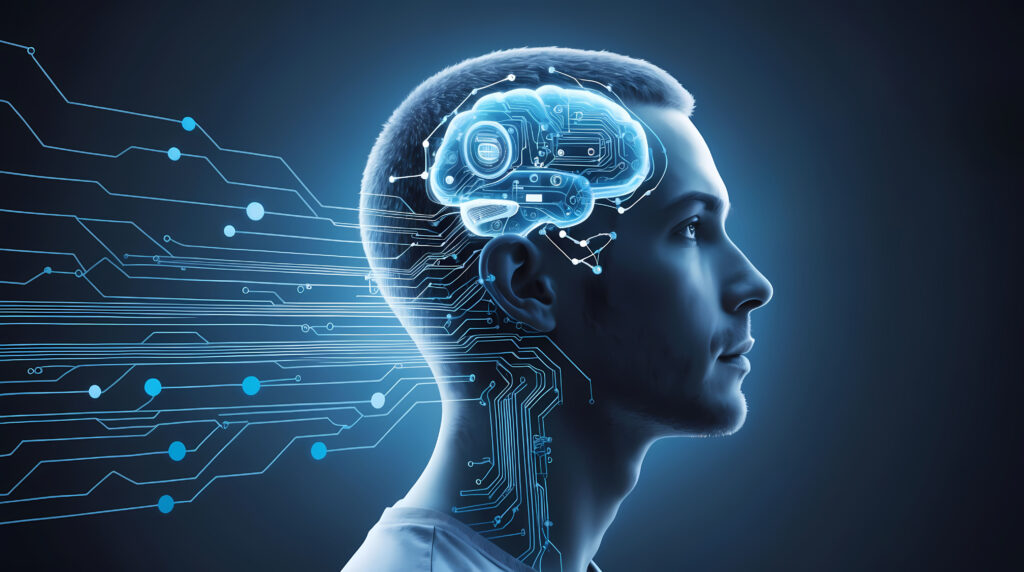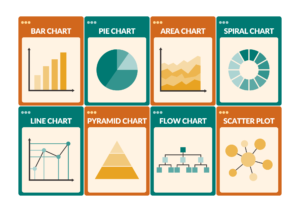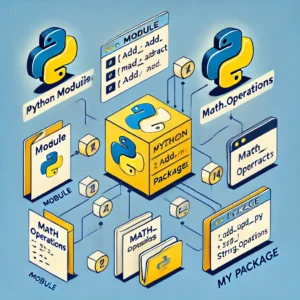Introduction to Deep Learning
Deep Learning (DL) is a subfield of machine learning (ML) that involves algorithms inspired by the structure and functioning of the human brain, known as artificial neural networks (ANNs). While ML focuses on developing algorithms that allow computers to learn from and make decisions based on data, deep learning takes this concept further, utilizing multi-layered neural networks to process vast amounts of complex data and deliver high-level insights.
In the modern era, deep learning has revolutionized numerous fields, from healthcare and finance to autonomous driving and natural language processing (NLP). The proliferation of data and the enhancement of computational power have paved the way for deep learning models that can tackle tasks previously considered too complex for traditional algorithms.

This article provides an in-depth overview of deep learning, its core principles, architectures, applications, and how it functions using real-life examples.
The Foundations of Deep Learning
- Artificial Neural Networks (ANNs): At the heart of deep learning are artificial neural networks, mathematical models inspired by biological neural networks, specifically the human brain. ANNs consist of layers of nodes (neurons), each connected to the others, forming a network. These nodes take input data, process it, and pass the result to the next layer.Neural networks are typically divided into three types of layers:
- Input layer: This layer receives the data for the model to process.
- Hidden layers: These layers apply mathematical transformations to the input data, learning abstract features. Deep learning refers to networks with multiple hidden layers.
- Output layer: This layer provides the final output based on the learned patterns.
- Backpropagation and Optimization: Backpropagation is the process by which the model learns to adjust its weights (connections between neurons) to minimize errors. By comparing the model’s output to the actual target, the network adjusts its internal parameters in a way that reduces the difference between the predicted and actual results.Optimization algorithms, such as Stochastic Gradient Descent (SGD), help in minimizing this error, ensuring that the model improves with each iteration. Deep learning models often rely on large datasets and multiple iterations (epochs) to adjust the weights and learn the best features from the data.
- Activation Functions: To introduce non-linearity into the network, activation functions are applied to the output of each neuron. The most commonly used activation functions include:
- ReLU (Rectified Linear Unit): Activates only positive values and helps combat the vanishing gradient problem.
- Sigmoid: Converts values between 0 and 1, often used in binary classification tasks.
- Tanh: Similar to sigmoid but outputs values between -1 and 1.
- Training Deep Networks: The process of training a deep learning model involves providing it with large amounts of data, adjusting its parameters based on feedback (error rates), and optimizing its performance over time. In deep networks, the multiple hidden layers learn abstract representations at different levels, from simple edges in an image to complex object recognition.
Real-Life Examples of Deep Learning
1. Autonomous Vehicles:
One of the most exciting applications of deep learning is in autonomous vehicles, where cars are trained to navigate and make decisions on their own. Tesla, Waymo, and other companies have invested heavily in deep learning to allow vehicles to recognize traffic signs, pedestrians, other vehicles, and even predict the actions of other drivers.
Real-life example: Imagine an autonomous car driving down a busy road. It encounters a stop sign, a pedestrian crossing the road, and another vehicle approaching an intersection. The car’s cameras capture the scene, and deep learning models interpret the raw images. Convolutional Neural Networks (CNNs) identify the stop sign, the pedestrian, and the other car. Recurrent Neural Networks (RNNs) are then used to predict future events, like whether the pedestrian will continue walking or if the other car will stop at the intersection.
By training on vast datasets of real-world driving scenarios, the car learns to recognize patterns and make decisions that mimic human behavior. The ultimate goal is to develop cars that can drive themselves with minimal human intervention, ensuring safety and reducing the risk of accidents.
2. Healthcare:
Deep learning has had a transformative impact on healthcare, especially in the field of medical imaging. From identifying tumors in radiology scans to predicting patient outcomes, deep learning models have consistently outperformed traditional methods.
Real-life example: In radiology, Convolutional Neural Networks (CNNs) are used for image recognition tasks. For example, a deep learning model trained on thousands of X-ray images can detect signs of pneumonia, lung cancer, or other abnormalities with high accuracy.
Let’s consider a specific case: A radiologist is tasked with identifying malignant tumors in mammograms. Historically, this was a challenging task with a high rate of false positives or negatives. However, deep learning models can analyze pixel-level information in the images, learning the features that distinguish benign from malignant tumors. With continuous training on more data, these models not only improve in accuracy but can also help radiologists identify cancers at earlier stages, increasing survival rates for patients.
3. Natural Language Processing (NLP):
Natural Language Processing involves teaching machines to understand and generate human language. Deep learning models like transformers have become instrumental in making breakthroughs in NLP, enabling applications such as machine translation, sentiment analysis, and question-answering systems.
Real-life example: Google’s BERT (Bidirectional Encoder Representations from Transformers) model revolutionized how search engines understand and rank web pages. Prior to deep learning, search engines relied on keyword matching. However, BERT allows Google to comprehend the context and intent behind a search query, delivering more relevant results.
Suppose a user searches for “best way to care for indoor plants during winter.” Earlier models might have focused on individual words, retrieving articles about “best indoor plants” or “winter plant care.” BERT, however, understands the full context and retrieves articles specifically about caring for indoor plants during winter.
Another real-life example is chatbots and voice assistants like Siri, Alexa, and Google Assistant. These AI-driven applications rely on deep learning for speech recognition and language understanding. They can understand voice commands, process natural language, and respond appropriately, mimicking human interaction.
4. Image Generation:
Generative models, especially Generative Adversarial Networks (GANs), are a branch of deep learning used to create new content, such as images, music, and even video. GANs consist of two networks: a generator that creates images and a discriminator that evaluates their authenticity. Together, they can produce incredibly realistic images or designs.
Real-life example: Deep learning is used in art generation, where a model like StyleGAN can create high-quality images of human faces. These models can generate completely new faces that don’t exist in real life. This technology is now being used in fields like gaming, where deep learning models generate landscapes, characters, or other visuals on the fly.
Another real-world use of image generation is deepfakes, where deep learning models are used to superimpose someone’s face onto another person in a video. Although controversial due to ethical concerns, the underlying deep learning technology demonstrates the power of generating realistic content.
5. Fraud Detection in Finance:
In the financial industry, deep learning is being used to detect fraudulent activities, from credit card fraud to money laundering. Deep learning models can identify anomalies in transactions and flag suspicious activities for further investigation.
Real-life example: Imagine a bank that processes millions of transactions daily. By employing deep learning, the bank can analyze customer transaction patterns and detect when an unusual transaction occurs. For example, if a customer usually makes purchases in New York but suddenly there’s a large transaction in Tokyo, deep learning models can flag this as potentially fraudulent.
In contrast to traditional rule-based systems, which rely on predefined rules to detect fraud, deep learning models can adapt and learn from new types of fraud, making them much more effective in real-world scenarios.
Popular Deep Learning Architectures
Several deep learning architectures have been developed to handle different types of tasks. Some of the most common ones include:
- Convolutional Neural Networks (CNNs): CNNs are specifically designed for image processing tasks. They use convolutional layers to detect patterns like edges, textures, and objects in images. CNNs have been revolutionary in fields like computer vision.
- Recurrent Neural Networks (RNNs) and Long Short-Term Memory (LSTM): RNNs are used for sequential data, like time series or natural language, where context from previous data points is important. LSTMs, a special type of RNN, are designed to overcome the problem of forgetting long-term dependencies.
- Transformers: Transformers have become the dominant architecture in NLP. Unlike RNNs, they don’t rely on sequential data processing, which makes them much faster. Models like BERT and GPT, based on transformers, have pushed the boundaries of NLP tasks.
- Autoencoders: Autoencoders are used for unsupervised learning, particularly in data compression and dimensionality reduction. They consist of an encoder that compresses the data and a decoder that reconstructs the original input.
- Generative Adversarial Networks (GANs): GANs are designed for generative tasks, such as creating images, videos, or music. They consist of a generator that creates new data and a discriminator that evaluates it.
Challenges and Future of Deep Learning
Despite its remarkable achievements, deep learning faces several challenges:
- Data Requirements: Deep learning models require vast amounts of labeled data to perform well. While companies like Google or Facebook can leverage their enormous datasets, smaller organizations may struggle to gather enough data to train their models.
- Computational Power: Training deep networks is computationally expensive, often requiring specialized hardware like GPUs. The need for massive computational resources can limit the accessibility of deep learning for smaller enterprises.
- Interpretability: Deep learning models, especially large networks, are often seen as “black boxes,” meaning their decision-making processes are difficult to interpret. This lack of transparency can be problematic in high-stakes fields like healthcare or finance, where understanding why a model made a certain decision is critical.
- Overfitting: Deep models can sometimes become too complex, learning the noise in the data rather than the underlying pattern, which leads to poor generalization on new data.
Despite these challenges, the future of deep learning is incredibly promising. Researchers are actively working on reducing the data and computational needs of deep learning models. Techniques like transfer learning, where a model trained on one task is adapted for another, and zero-shot learning, where a model can generalize to unseen tasks, are pushing the boundaries of what’s possible.
Conclusion
Deep learning has transformed multiple industries by enabling machines to learn from data in ways that mimic human intelligence. Whether it’s detecting cancer in medical scans, driving autonomous vehicles, understanding natural language, or detecting financial fraud, deep learning’s impact is undeniable. With advances in computing power, algorithms, and data availability, deep learning will continue to drive innovation, solving problems that once seemed insurmountable.
The journey of deep learning has only just begun, and as we continue to refine these models, their applications will only grow, improving the way we interact with technology and the world around us.




